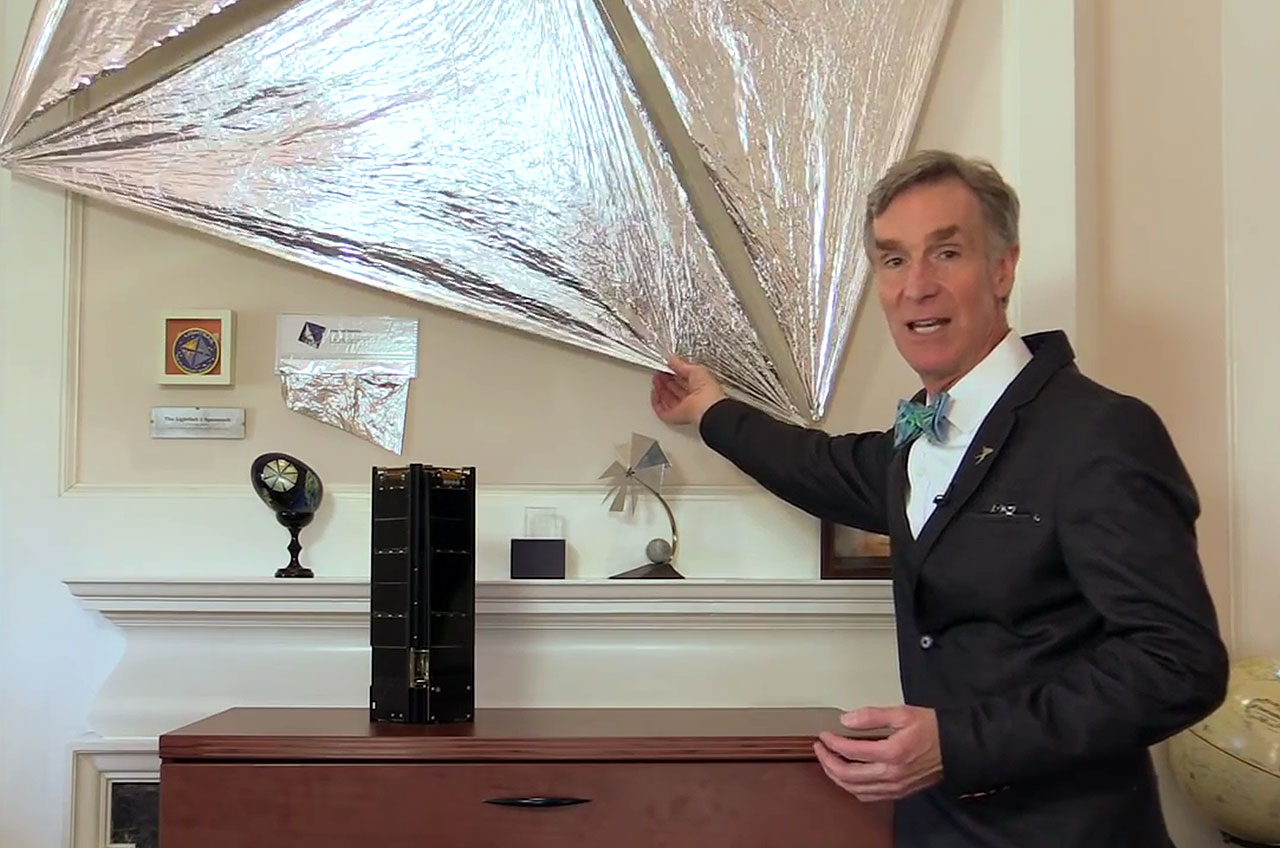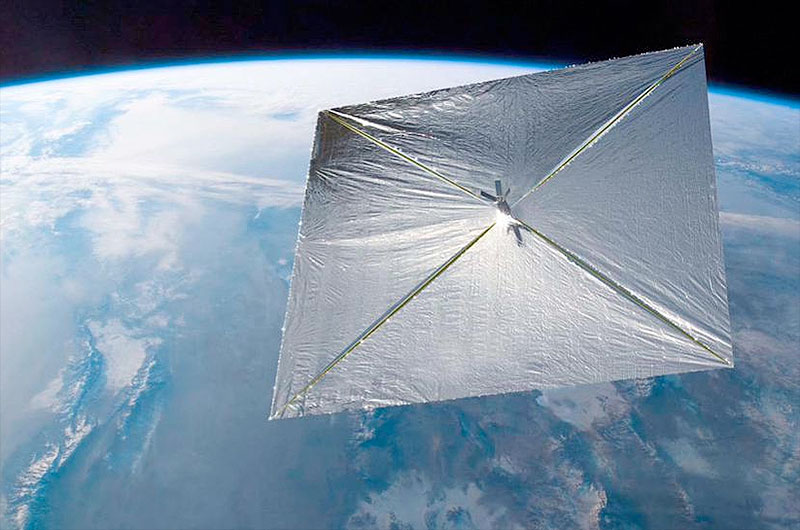Bill Nye Launches Kickstarter to Push Solar Sailing Cubesat to Space

Bill Nye ("The Science Guy") wants you to be a part – and get a part – of a "revolutionary solar sailing spacecraft" mission.
As leader of The Planetary Society, a non-profit dedicated to the exploration of the solar system, Nye has launched a crowdfunding campaign for the LightSail, a "citizen-funded flight by light" that will demonstrate a space travel concept first popularized by Carl Sagan nearly 40 years ago.
"Come along on a cosmic journey with me by participating in a mission to sail a spacecraft, a tiny CubeSat no bigger than a breadbox, on beams of light," invites Nye on the LightSail project's Kickstarter page. "Through this proof-of-concept mission, we will use CubeSats to open new paths beyond Earth and one day potentially to other planets with an inexpensive, inexhaustible means of propulsion." [The Evolution of Solar Sails in Photos]
To raise the $200,000 (and more) needed for the mission, Nye and The Planetary Society are giving away symbolic squares of the solar sail itself, as well as other rewards in return for pledges.
Gaining momentum
"You may not have thought about it, but light is made of photons and photons have no mass," Nye explains as part of a video for the campaign. "But they have momentum."

"So if sunlight is shining on something, it is actually giving it a tiny, tiny push," he said.
Spacecraft can capture this momentum by using a large, lightweight mirrored surface. In the case of The Planetary Society's LightSail, it is actually four triangular Mylar sails that are each one-fourth the thickness of an average trash bag.
Get the Space.com Newsletter
Breaking space news, the latest updates on rocket launches, skywatching events and more!
As light reflects off the Mylar, most of its momentum is transferred, pushing on the sail. The resulting acceleration is small, but it is continuous, such that the spacecraft can reach higher speeds over time.
The Planetary Society will demonstrate LightSail in space with a test flight scheduled to launch on an Atlas V rocket from Cape Canaveral, Florida on May 20.
"We will test our prototype this month and next by flying it in low-Earth orbit for about 30 days," Nye said. "While our Kickstarter campaign runs, you will be able to follow along as we validate the deployment of our sail booms."
The prototype will not soar high enough above the Earth's atmosphere to demonstrate solar sailing. About one week after sail deployment, the LightSail's orbit will decay and it will burn-up on re-entry.
The primary LightSail mission, which will orbit high above the Earth after being launched on a SpaceX Falcon Heavy rocket, is currently slated for launch in fall 2016, assuming The Planetary Society can raise the remaining $1.2 million of the full $5.45 million the mission will cost.
Sail sale

"We don't expect to get [the remaining funds] all from one source at one time, but you can put us on the trajectory to launching in 2016," Nye said. "We're setting an ambitious Kickstarter goal of $200,000, with stretch goals that take us all the way up to the $1 million mark."
The campaign reached its "ambitious" goal of $200,000 on just its second day. It runs through June 26.
Most of that support has come in the form of $35 pledges, which is rewarded with a mission emblem decal and pin or patch, a Planetary Society membership, and a "centimeter of sail."
"Backers at this level will own one square centimeter of LightSail, and a certificate of ownership to go with it!" the campaign page states.
Other rewards include a LightSail t-shirt, a LightSail-gazing kit, a limited edition LightSail poster, and more — even a chance to send your name on the LightSail in 2016.
"We want you to give the LightSail a kick ... to kickstart-it!" Nye exclaimed.
Click through to collectSPACE.com to watch Carl Sagan talk about the LightSail in 1976.
Editor's note: This story was updated on May 14 to clarify the reward for Kickstarter supporters of LightSail. They will receive a symbolic square of the solar sail, not a physical piece of the sail.
Follow collectSPACE.com on Facebook and on Twitter at @collectSPACE. Copyright 2015 collectSPACE.com. All rights reserved.
Join our Space Forums to keep talking space on the latest missions, night sky and more! And if you have a news tip, correction or comment, let us know at: community@space.com.

Robert Pearlman is a space historian, journalist and the founder and editor of collectSPACE.com, a daily news publication and community devoted to space history with a particular focus on how and where space exploration intersects with pop culture. Pearlman is also a contributing writer for Space.com and co-author of "Space Stations: The Art, Science, and Reality of Working in Space” published by Smithsonian Books in 2018.In 2009, he was inducted into the U.S. Space Camp Hall of Fame in Huntsville, Alabama. In 2021, he was honored by the American Astronautical Society with the Ordway Award for Sustained Excellence in Spaceflight History. In 2023, the National Space Club Florida Committee recognized Pearlman with the Kolcum News and Communications Award for excellence in telling the space story along the Space Coast and throughout the world.










